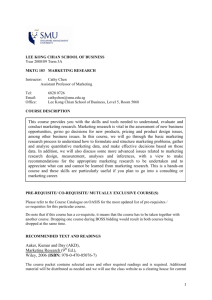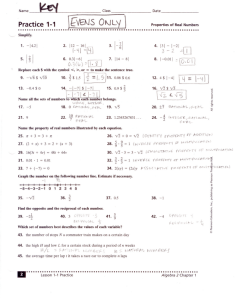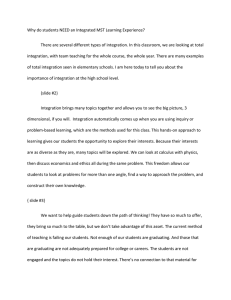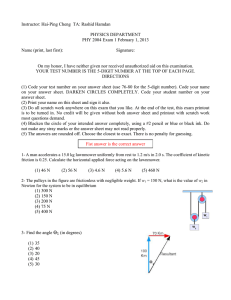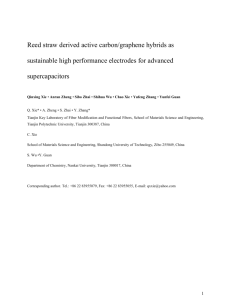10th Annual Meeting of the Organization for Human Brain Mapping
advertisement
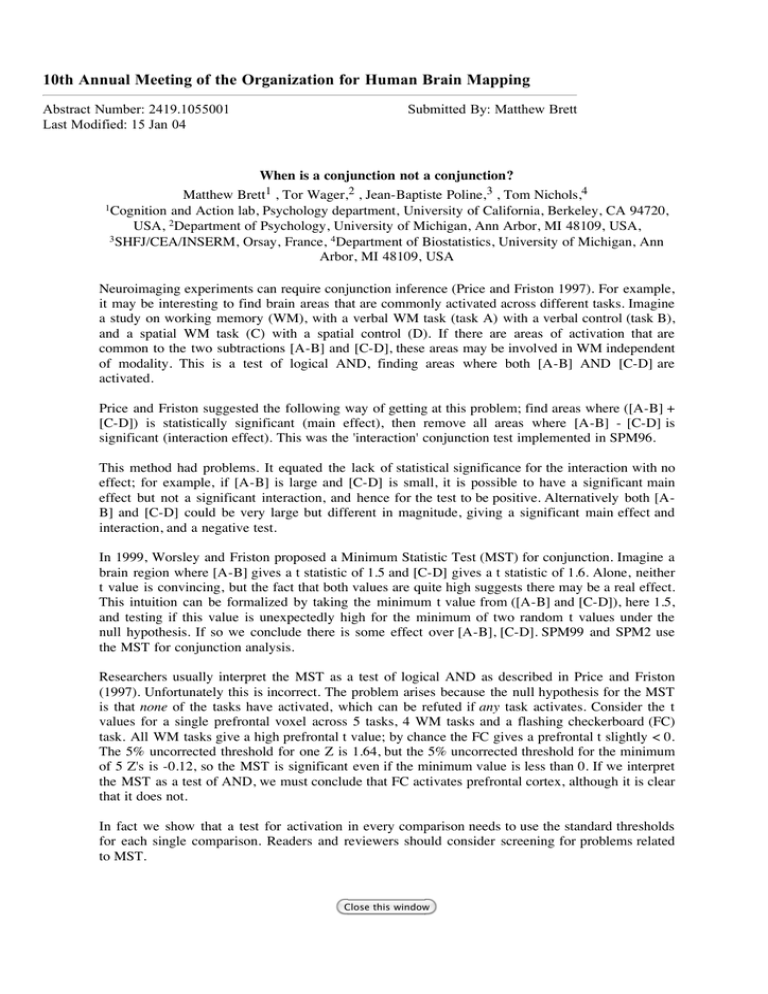
10th Annual Meeting of the Organization for Human Brain Mapping Abstract Number: 2419.1055001 Last Modified: 15 Jan 04 Submitted By: Matthew Brett When is a conjunction not a conjunction? Matthew Brett1 , Tor Wager, 2 , Jean-Baptiste Poline, 3 , Tom Nichols,4 and Action lab, Psychology department, University of California, Berkeley, CA 94720, USA, 2Department of Psychology, University of Michigan, Ann Arbor, MI 48109, USA, 3 SHFJ/CEA/INSERM, Orsay, France, 4 Department of Biostatistics, University of Michigan, Ann Arbor, MI 48109, USA 1 Cognition Neuroimaging experiments can require conjunction inference (Price and Friston 1997). For example, it may be interesting to find brain areas that are commonly activated across different tasks. Imagine a study on working memory (WM), with a verbal WM task (task A) with a verbal control (task B), and a spatial WM task (C) with a spatial control (D). If there are areas of activation that are common to the two subtractions [A-B] and [C-D], these areas may be involved in WM independent of modality. This is a test of logical AND, finding areas where both [A-B] AND [C-D] are activated. Price and Friston suggested the following way of getting at this problem; find areas where ([A-B] + [C-D]) is statistically significant (main effect), then remove all areas where [A-B] - [C-D] is significant (interaction effect). This was the 'interaction' conjunction test implemented in SPM96. This method had problems. It equated the lack of statistical significance for the interaction with no effect; for example, if [A-B] is large and [C-D] is small, it is possible to have a significant main effect but not a significant interaction, and hence for the test to be positive. Alternatively both [AB] and [C-D] could be very large but different in magnitude, giving a significant main effect and interaction, and a negative test. In 1999, Worsley and Friston proposed a Minimum Statistic Test (MST) for conjunction. Imagine a brain region where [A-B] gives a t statistic of 1.5 and [C-D] gives a t statistic of 1.6. Alone, neither t value is convincing, but the fact that both values are quite high suggests there may be a real effect. This intuition can be formalized by taking the minimum t value from ([A-B] and [C-D]), here 1.5, and testing if this value is unexpectedly high for the minimum of two random t values under the null hypothesis. If so we conclude there is some effect over [A-B], [C-D]. SPM99 and SPM2 use the MST for conjunction analysis. Researchers usually interpret the MST as a test of logical AND as described in Price and Friston (1997). Unfortunately this is incorrect. The problem arises because the null hypothesis for the MST is that none of the tasks have activated, which can be refuted if any task activates. Consider the t values for a single prefrontal voxel across 5 tasks, 4 WM tasks and a flashing checkerboard (FC) task. All WM tasks give a high prefrontal t value; by chance the FC gives a prefrontal t slightly < 0. The 5% uncorrected threshold for one Z is 1.64, but the 5% uncorrected threshold for the minimum of 5 Z's is -0.12, so the MST is significant even if the minimum value is less than 0. If we interpret the MST as a test of AND, we must conclude that FC activates prefrontal cortex, although it is clear that it does not. In fact we show that a test for activation in every comparison needs to use the standard thresholds for each single comparison. Readers and reviewers should consider screening for problems related to MST. Close this window

